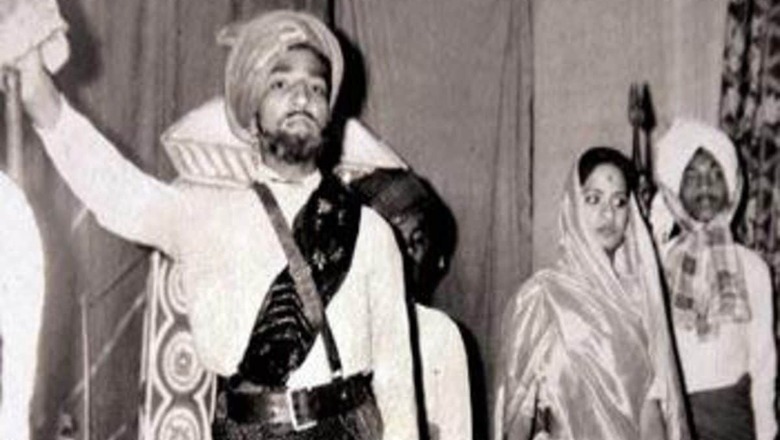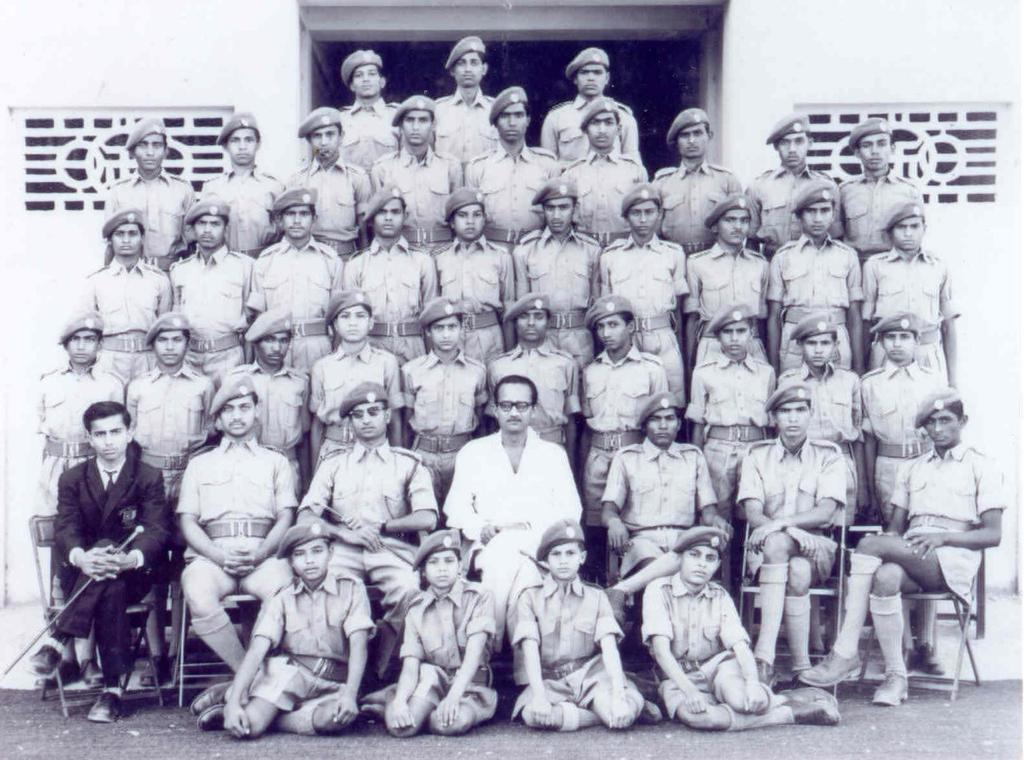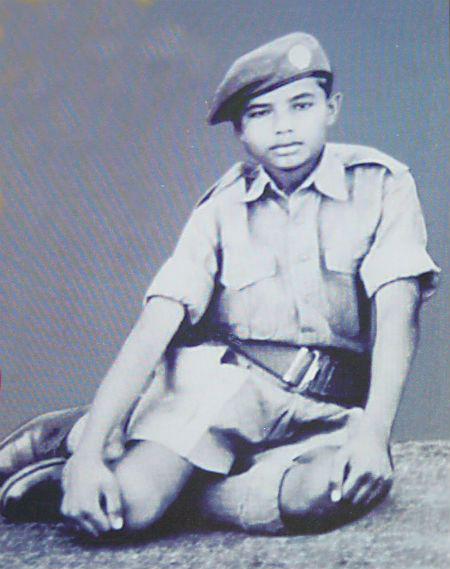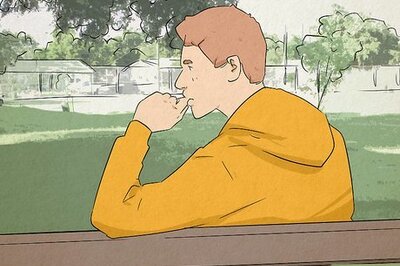
views
When youngsters of his age were worried about carving out a career for themselves and finding employment, Narendra Modi left home to become an ascetic. In 1967, Narendra Modi passed the class 11 examination, also known as the Senior School Certificate (SSC) exam. The test was held in March at the Visnagar centre in Gujarat’s Mehsana district. After the results, on the last day of May, Modi took a transfer certificate from BN High School, where he had been studying since class 8.
It was not that Modi wanted to get a routine education like other youngsters. It was not his intention to enrol in any college for further studies after finishing school from class 1 to 11.
Fighting spirit
In actuality, Modi had considered travelling to Jamnagar’s Balachadi – while he was a student – to attend the Sainik School and eventually enlist in the Army to serve the nation. In 1962, when Modi learnt about India’s defeat in the war with China through newspapers and All India Radio, he was deeply saddened and his resolve grew stronger. He also observed Indian soldiers passing by on a train attempting to manage a difficult situation despite their evident lack of resources.
The Indian Army did not have the kind of weapons or clothes, shoes, and other resources needed to fight at an altitude of thousands of feet. The political leadership of the time, led by Pandit Jawaharlal Nehru, was speaking of Hindi-Chini Bhai-Bhai and did not anticipate an attack from China. The government spoke of non-alignment, Panchsheel, and world peace. But as part of Beijing’s expansionist policy, first Tibet was conquered, and then when China suddenly attacked NEFA and Ladakh, top government officials were shaken up from their slumber. Indian soldiers were sent to counter the Chinese army, without any preparations. They didn’t have proper provisions or capable leaders.
Lt Gen BM Kaul, with no combat experience, was made the corps commander, just because of his proximity to Nehru. He developed cold feet as soon as the war started and was admitted to a hospital with a fever. The outcome was unsurprising. The Indian soldiers had to suffer massive casualties, hundreds were killed in action, the morale was broken, and the Chinese army penetrated deep inside. The treasury of Tezpur was also burnt and Nehru left the people of Assam at the mercy of the gods.
At that time, present-day Arunachal Pradesh was known as NEFA. Shillong used to be the capital of Assam, from where the administration of NEFA functioned.
Hundreds of thousands of students like Modi were also distressed, like the rest of the country, by this development. Everyone wanted to contribute to the fight against the enemy. People also donated in large numbers to the Army Relief Fund. Modi thought, since he was too young at the time, the easiest way to join the Indian Army in the future was through the Sainik School.
Modi was 12 years old when the Sino-Indian war took place. The Sainik School was founded a year earlier in Jamnagar district’s Balachadi area, near the seaside where the Maharaja of Jamnagar once had his summer house. When the school opened in July 1961, students between the ages of 10 and 12 were admitted starting in class 6. Youngsters who were not accepted into the sixth standard also had the option of entering the ninth standard. However, the household was not in good financial condition; father Damodardas Modi and mother Heeraba were barely able to support their six children and make ends meet. At the tea stall, little Narendra was assisting his father, Damodardas, who was not yet ready to let him leave.
NCC days
Modi was despondent but he soon found his way into the NCC. Established on July 16, 1948, to strengthen the spirit of discipline, patriotism, and unity among adolescent students, the NCC used to have two divisions: junior and senior.
Narendra Modi was lean and short-statured in his childhood days, but there was no lack of agility. Modi had, by then, got into BN High School, which was established in 1949 when Bhagwatacharya Narayanacharya donated Rs 25,000 for it, and the school was named after him.


Modi requested Gordhanbhai Patel, who was an English teacher at BN High School, to allow him to join the NCC. The prerequisites for joining included being 13 years of age and in excellent shape. Gordhanbhai, who was also the NCC instructor at the school, was apprehensive about Modi’s health. However, after taking all the tests, Modi showed that he was superior to the other students, which led to his acceptance into the NCC.
Modi was an NCC cadet for three years. He developed great shooting skills with the .22 rifle during this time, enabling him to hit the target with great accuracy. Who could have imagined at the time that this youngster who failed to get into the Army or Sainik School would one day hit the bullseye in the field of politics and rise to the top?
At NCC, Modi consistently bested the turnout, always keeping his shoes and clothes immaculate. Modi maintained the belt’s brass buckle gleaming in addition to the shirts, trousers, and shoes he wore. He has been a natty dresser since the NCC days, and both the nation and the rest of the world have taken notice. A couple of photographs from Modi’s NCC days were taken in 1965 when he visited a camp in north Gujarat, which show the future prime minister in his best form.
In 1965, another war broke out between India and Pakistan. It began with Pakistan infiltrating across the Kutch border in Modi’s home state of Gujarat. At that point, Pakistan had covertly advanced its soldiers and taken control of a sizable portion of the marshy Rann of Kutch, citing a disagreement over the international border between Kutch and Sindh. Vigilance at the border was not as high at the time. In the Rann of Kutch area, a combined contingent of Gujarat State Reserve Police and CRPF guarded the Indian border. The BSF was only established as a special central force to protect the border in response to this occurrence.
Large numbers of Indian troops were sent to counter Pakistan’s invasion into the Kutch region. This border standoff erupted into a full-scale war between Pakistan and India, during which the Indian army advanced up to Lahore. At the time, Modi visited Mehsana station, from where there was a significant Army train movement, to buoy the spirits of the Indian soldiers.
On centre stage
Modi developed an interest in theatre during his time in school and at NCC. Jogidas Khuman, Sneh Sagai, and Hariyali Ka Hatyara were some of the productions he participated in. Anarta Pradesh, which historically included parts of north Gujarat such as Vadnagar, was renowned for Natya Vidya. The people here were adept in the dramatic arts. Modi too had become a skillful theatre performer in his school days. The majority of the plays dealt with significant social themes. Money for social causes was also often raised through the production of these plays. Along with his associates, Modi performed at numerous charity events. He began directing and writing plays while still an actor. Peelu Phool was one such play that addressed the issue of untouchability and raised awareness about this social ill.
Modi’s enthusiasm was fuelled by the roles he enacted and the plays he directed in his school days. He wanted to get into a drama school in Maharashtra to formally study Natya Shastra. His intention was to move in this direction after studying in class 11. The tradition of theatre was very strong in Maharashtra at the time, where plays were not just a means of entertainment, but a powerful medium of awakening social consciousness. At that time, Mumbai films also had social messages instead of the usual masala, violence, and eroticism of today.
But his father wasn’t ready. When Narendra informed Damodardas Modi about his intention, the father reprimanded him, asking why he wanted to be a “dancing boy”. At that time, every parent’s wish was that their child should become a doctor or an engineer by taking up science after class 11. Damodardas Modi was not willing to make his son an artiste, with no hope of making ends meet, and no means to send him to a drama school in Maharashtra.
Giving the old ‘college’ try
The best college to study science after passing class 11 or SSC was in Visnagar itself. It was known as MN College, which was established in 1946, just before Independence. The credit for the establishment goes to Seth Maneklal Nanchand, who had provided funds for it and had given a large donation. Hence, the college was named after him.
Like Modi’s birthplace Vadnagar, Visnagar too was then part of the Gaekwad princely state. After all, the entire Mehsana district was part of the princely state of Baroda. Both Vadnagar and Visnagar came under Mehsana; still do. The college building is much like the Baroda College building, which was established by the most popular ruler of the princely state, Maharaja Sayajirao Gaekwad III, during his reign, in 1881. This Baroda College itself became Maharaja Sayajirao University in 1949, two years after Independence.
Just as the fame of Baroda College was due to its academic standards, the same popularity was achieved by MN College soon after its establishment. At that time, there were very few centres of higher education. In fact, MN College was considered the best college between Ajmer and Ahmedabad. The reason was also clear. Not only was the college building imposing, but the teachers who taught there were also highly revered. At the time, and even now, colleges were highly regarded more for their academic standards than the grandeur of their buildings.
How good the teachers of this college were can also be gauged from the fact that the founding principal of this college was Vinayak Krishna Gokak. Gokak received the Jnanpith Award in 1990 for his Kannada-language composition Bharat Sindhu Rashmi and became famous in the country and abroad. Later, he was also honoured with the Padma Shri.
Interestingly, Gokak was a professor of English literature and had studied at Oxford. He was the principal of Willingdon College, Sangli, before becoming the principal of MN College in January 1946. Gokak was the principal of MN College for two and a half years, and after strengthening its foundations till July 1949, he left the post, went to Kolhapur, and became the principal of Rajaram College. Before Modi went to MN College in 1967, renowned mathematician PC Vaidya had also been the principal there.
During that era, the old education system was still being followed, as the new one was implemented only in 1981. After studying till class 11 under the old education system, the students used to be in pre-university for one year before going for graduation. Modi enrolled in a science stream pre-university course at MN College. His parents wanted their son to become a doctor or engineer and make a good living.
Modi entered college in 1967 in accordance with the family’s desires. Visnagar was his maternal home with plenty of relatives around and his hometown Vadnagar wasn’t too far away either. Modi, though, couldn’t develop much interest in what was being taught in college. As a result, his attendance suffered in 1967-1968. He was present for a mere 61 days in that academic year.
Before Modi, two others — Shankersinh Vaghela and Anandiben Patel — had joined the college. At that time, who knew how big a role they would play in Modi’s political life? Who knew that Modi, who would enter BJP’s Gujarat unit as organisation general secretary with Shankersinh Vaghela as state president, would have to leave Gujarat for about 6 years because of a rebellion by the same Vaghela? Who knew that when he would head towards Delhi after being the chief minister of Gujarat for a record 13 years approximately, he would hand over the reins of power to his college senior Anandiben Patel?
Seeking a life less ordinary
While MN College holds the record of giving three chief ministers to Gujarat, Modi did not think about politics while studying there. He just wanted to be free of material concerns. After spending a few months at MN College in Visnagar, Modi’s resolve to break the shackles of family life and move towards asceticism became stronger.
Fearing that their son might become a monk, Modi’s parents compelled him to get married after he had completed his schooling in Vadnagar and was still a minor. However, Modi was uninterested in this mundane life. From childhood, he felt more at home among hermits and holy men, and in the RSS shakha where people were taught to put the nation’s interest ahead of their own. Modi since childhood also observed Sangh pracharaks like Vakil Saheb, who were engaged in establishing the roots of the RSS in the rural areas and towns of Gujarat, hundreds of kilometres away from their hometown, constantly on the move.
Modi also saw the sadhus who were constantly trying to reach the highest peak of spirituality while doing meditation. Sitting in the library of Vadnagar, Narendra Modi had also read about his idol Swami Vivekananda, who had taken sanyas at an early age, planted the flag of Sanatan culture all over the country and the world, and visited many cities and towns of Gujarat before going to the World’s Parliament of Religions in Chicago in 1893.
From childhood to adolescence, Modi read a lot of religious and spiritual books. The more he studied, the more inclined he became towards spirituality. Modi decided to leave home before he became an adult to live an itinerant life. He informed his family members about this. Naturally, there was outrage. But when persuasion by his parents and neighbours failed to yield any result, his mother put a tika on his forehead and sent him off. This was the beginning of Modi’s nomadic life, with neither his family nor relatives being aware of where he was headed or who he would get his deeksha from.
(More in next edition)



















Comments
0 comment